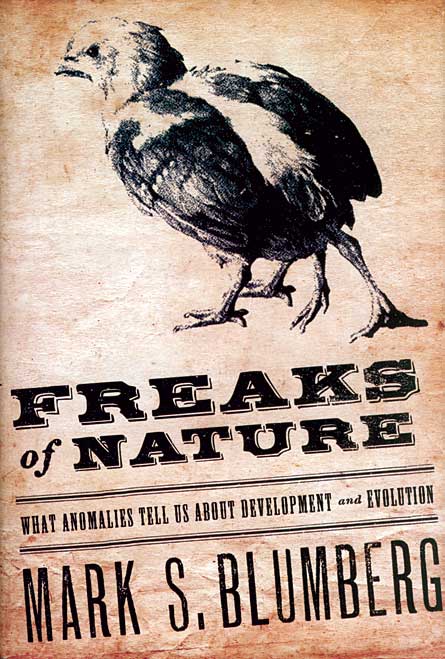Book Review: Freaks of Nature – What Anomalies Tell Us About Development and Evolution by Mark S. Blumberg
Review by Elizabeth Quill
Onlookers gape at freaks. Despite a person’s best efforts, it is hard to turn away from conjoined twins, one-eyed infants and legless anythings. But Blumberg, a professor of psychology and editor in chief of Behavioral Neuroscience, argues that scientists haven’t given nature’s oddities enough attention.

While Blumberg writes in a tone respectful of Charles Darwin’s accomplishments, he faults both Darwin and Darwin’s 20th century followers for dismissing monstrosities as “abrupt accidents” and “evolutionary dead ends.” Rather than sideshow curiosities, Blumberg writes, these evolutionary anomalies are proof that development is just as important as genetics, and small developmental tweaks can lead to very different bodily forms.
“We can continue to carve animals up into discrete chunks and tell stories about the origins of each trait,” he writes. “Alternatively, we can move beyond storytelling to take development seriously. When we do, creatures that once seemed so distinctively odd and incomprehensible suddenly become integrated into the large community of organisms.”
With well-picked examples, Blumberg constructs his at first peculiar, but ultimately profound, argument. He illustrates how developmental processes can lead to a duplicated face, alternative locomotion and ambiguous genitalia.
Though otherwise startlingly convincing, this read falls short in one respect. Blumberg fails to clearly explain how successful developmental alterations can be passed on to offspring — or fails to acknowledge outright that scientists are still in search of such answers.
Oxford Univ., 2009, 326 p., $22.95